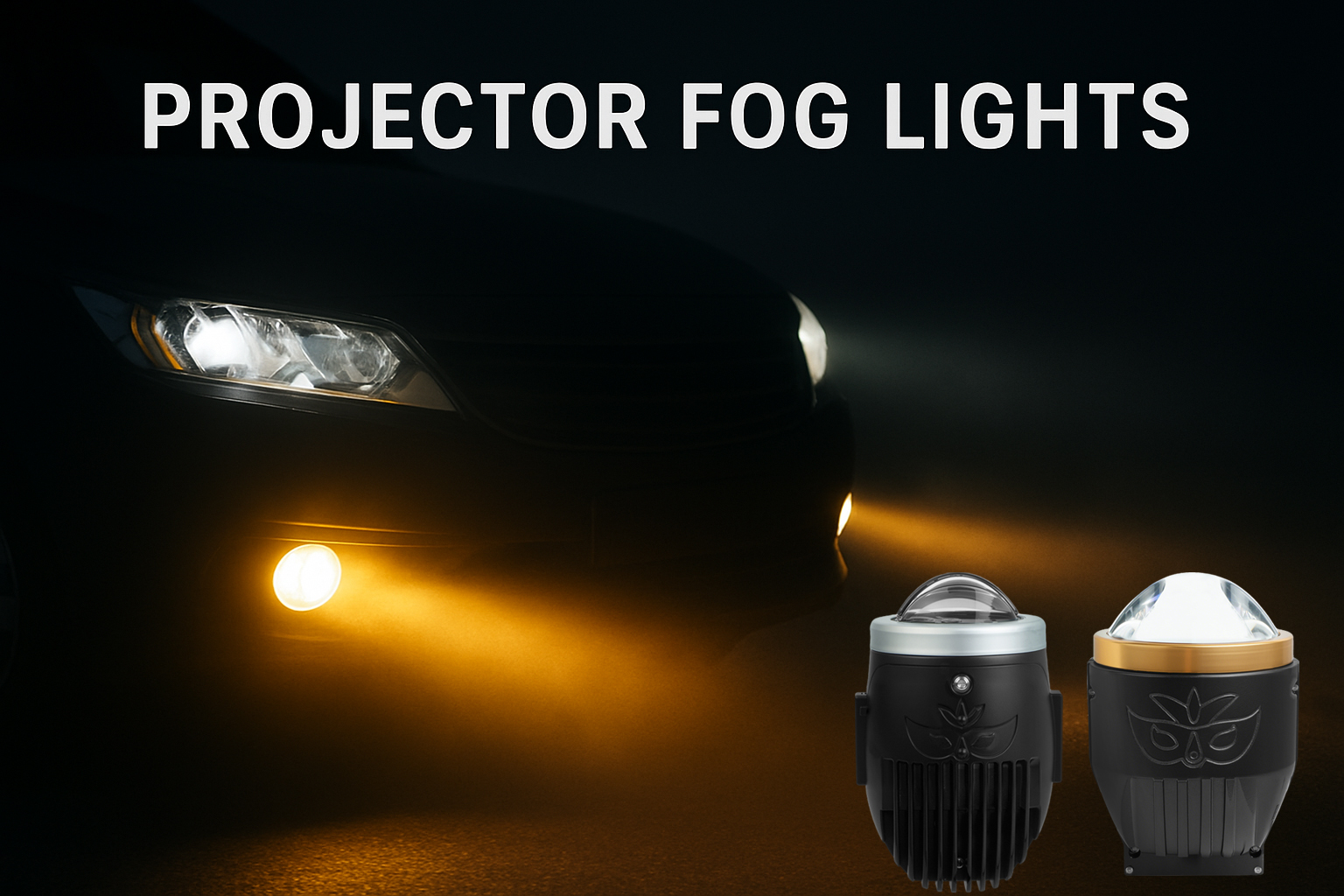- All
- Product Name
- Product Keyword
- Product Model
- Product Summary
- Product Description
- Multi Field Search
 English
EnglishViews: 0 Author: Site Editor Publish Time: 2025-10-15 Origin: Site
Fog lights play a crucial role in improving driving visibility during harsh weather conditions like heavy fog, rain, or snow.
Among them, projector fog lights have become increasingly popular thanks to their focused beam pattern, enhanced brightness, and stylish appearance.
Let’s dive into the evolution, classification, and future trends of projector fog lamps in modern automotive lighting technology.

Light Source: Halogen bulbs (H1, H3, H8, H11, etc.)
Structure: Simple reflector housing with a clear lens
Features:
Wide but scattered light output
Warm yellow color enhances visibility in fog
Affordable and easy to manufacture
Limitations:
Poor light focus
Limited brightness and short lifespan
➡️ Halogen fog lights laid the foundation for car lighting safety, but lacked precision.
Innovation: Introduction of projector lenses (glass or polycarbonate)
Benefits:
Focused beam with a sharp cutoff line
Improved road illumination without glare
Stylish and compact design
Light Source: Still halogen bulbs
Example Models: Early Audi A4, Toyota Camry, Honda Accord high trims
➡️ The use of projector lenses revolutionized the appearance and performance of fog lights.
Light Source: HID (High-Intensity Discharge) bulbs
Advantages:
Brighter output (up to 3000 lumens)
Adjustable color temperature (3000K yellow to 6000K white)
Longer lifespan
Drawbacks:
Requires a ballast (complex wiring)
Slight delay in light-up time
➡️ HID projector fog lights became a high-end upgrade for luxury and performance vehicles.
Light Source: High-efficiency LED chips (CSP/COB type)
Advantages:
Instant-on illumination
Long lifespan (30,000+ hours)
Low power consumption
Compact size for flexible design
Available in multiple color temperatures (3000K, 4300K, 6000K)
Lens Material: UV-resistant PC or tempered glass
➡️ LED projector fog lamps dominate today’s market — energy-efficient, durable, and stylish.


Laser Fog Lamps: Ultra-high brightness, used in premium vehicles.
Matrix LED Systems: Intelligent light control for adaptive lighting and corner illumination.
Smart Integration: Works with ADAS (Advanced Driver Assistance Systems) to enhance safety and visibility.
➡️ Projector fog lights are now part of the smart lighting era — integrating safety, design, and innovation.
| Type | Light Source | Key Features |
|---|---|---|
| Halogen Projector Fog Light | Halogen bulb | Warm yellow light, low cost |
| HID Projector Fog Light | Xenon HID bulb | High brightness, strong penetration |
| LED Projector Fog Light | LED chips | Long lifespan, low power |
| Laser Projector Fog Light | Laser diode | Ultra-bright, used in luxury cars |
| Type | Description | Advantage |
|---|---|---|
| Single-Lens | One projector lens | Simple, cost-effective |
| Dual-Lens | Two-layer optical system | Wider and more uniform beam |
| Integrated Type | All-in-one housing | Better waterproofing |
| Modular Type | Replaceable lens module | Easy maintenance or upgrades |
| Function | Description | Use Case |
|---|---|---|
| Single Color | Fixed color temperature (3000K or 6000K) | Standard vehicles |
| Three-Color Switchable | 3000K/4300K/6000K adjustable | All-weather conditions |
| Cornering Fog Lamp | Moves with steering angle | Premium models |
| Decorative / RGB Type | Color-changing or flashing | Off-road / show cars |
Multi-Functional Integration
Combined with daytime running lights (DRL) and turn signals.
Automatic activation during rain or fog.
Smart Lighting Systems
Connected with sensors and cameras.
Adaptive beam control for enhanced driving safety.
Design Customization
Black housing, clear lenses, or logo projection options.
Aesthetic appeal meets functionality.
Eco-Friendly & Efficient
High-efficiency LEDs reduce energy waste.
Compliant with E-Mark and DOT lighting standards.
From simple halogen lamps to high-tech laser and matrix projector fog lights, automotive fog lighting has evolved from a basic safety feature into a showcase of precision optics and smart design.
Modern LED projector fog lights not only improve visibility in bad weather but also reflect the evolution of automotive lighting technology toward safety, efficiency, and innovation.